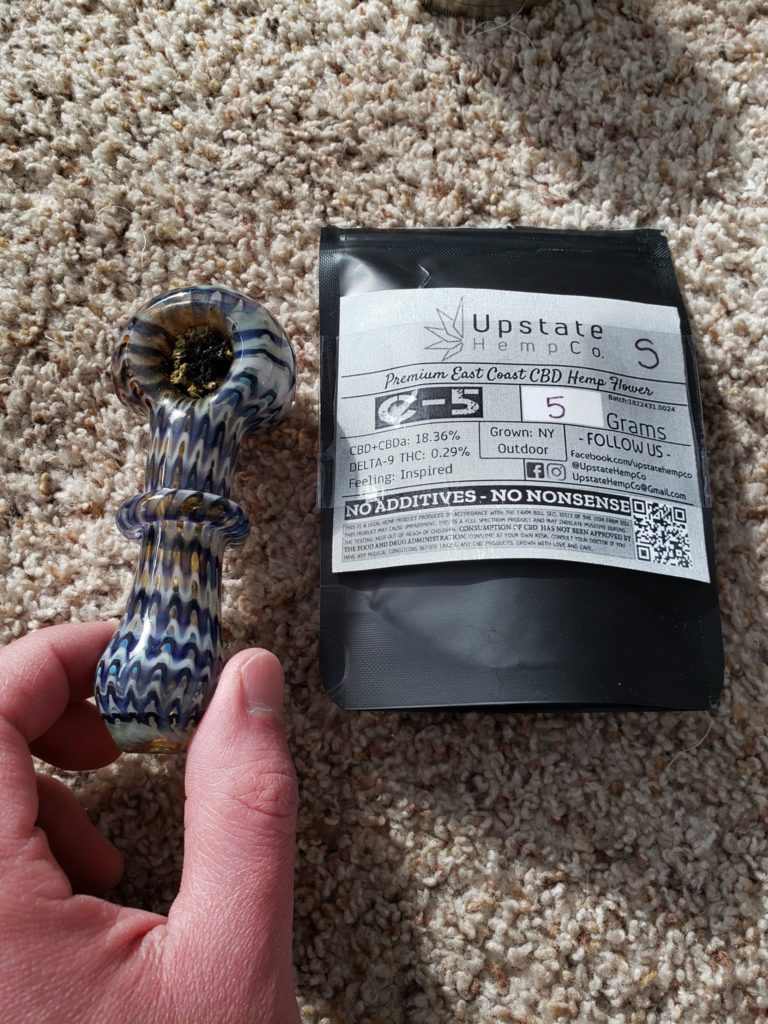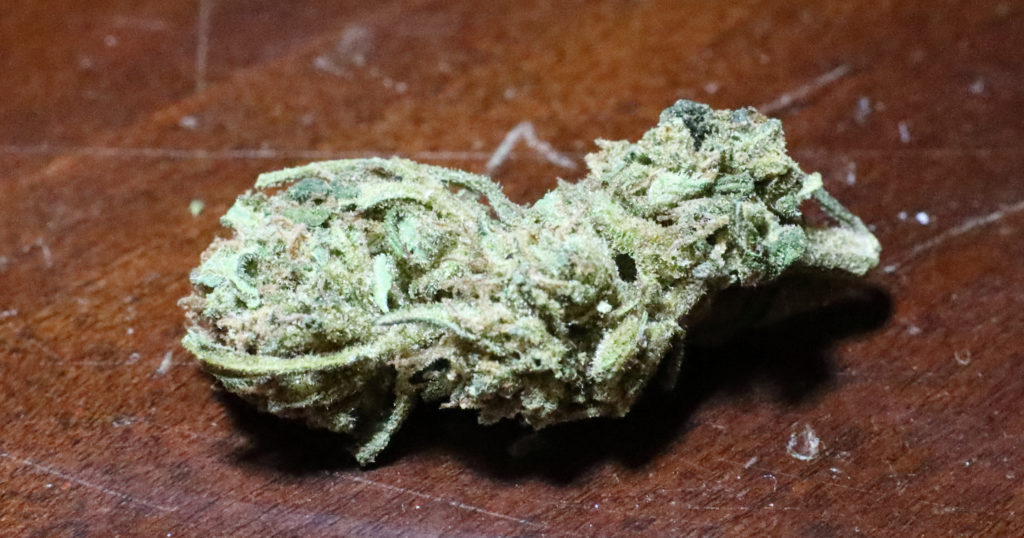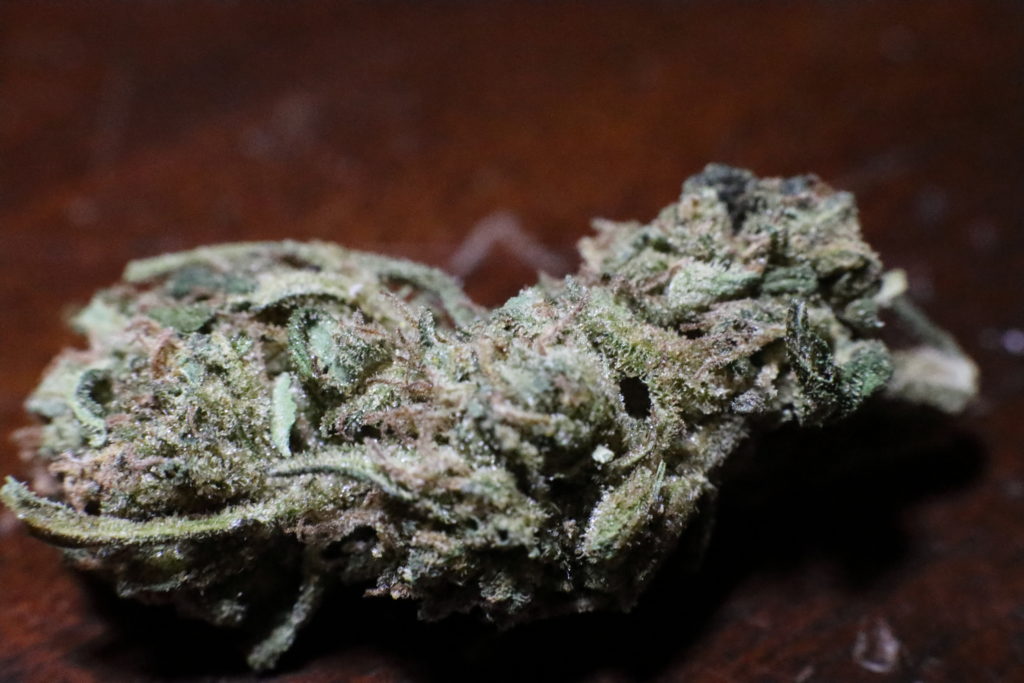Upstate Hemp Co, which has quickly become my favorite hemp flower shop, recently released a batch of C-5 Hemp. C-5 stood out among their other products since it boasted a 2.5% THCa content. THCa is a non-psychoactive version of THC compared to the one we know of delta-9 THC. NY’s pilot program only looked at the delta-9 content, not the potential of THCa. With this, the plant is fully legal under Federal and State law but has a higher potential THC content than most hemp. In addition to the THCa content, it has 0.29% delta-9 THC and 18% CBD!

Opening the bag, the flower had a very earthy smell which gave me a very familiar feeling to this flower. First thing I noticed was the very high trichome coverage on the flower! The flower is also a bit darker in color compared to Deschutes.

Smoking C-5 continued the familiar feeling and provided a bit of a comforting sensation. The smoke gave off a bit of a pine-y scent and was very pleasant. While the overall THC content will be low compared to legal products I have used, the presence is still noticeable.

Shortly after smoking I most certainly felt the THC. My thoughts were starting to drift a bit but were certainly manageable. I found myself being very active and started to experience a bit of the munchies. Overall it was a very mild buzz but it did provide a bit of a clear head from the high CBD content.
